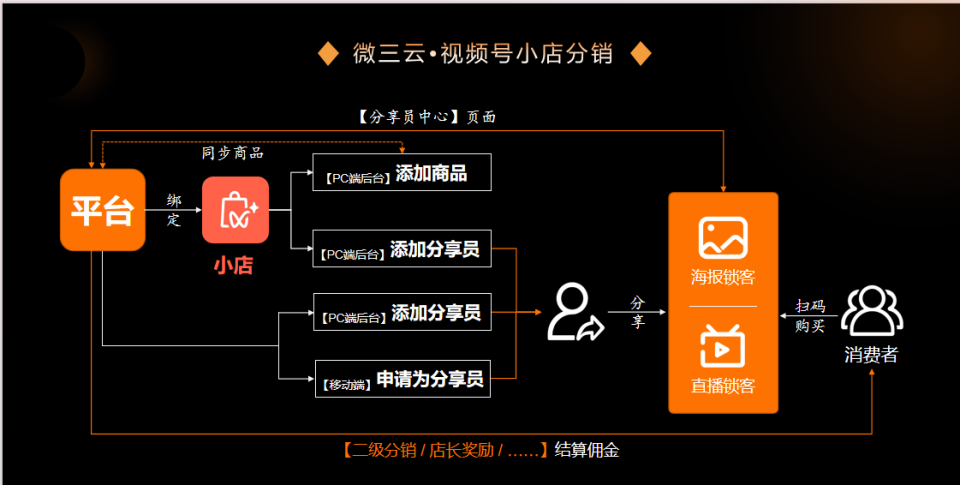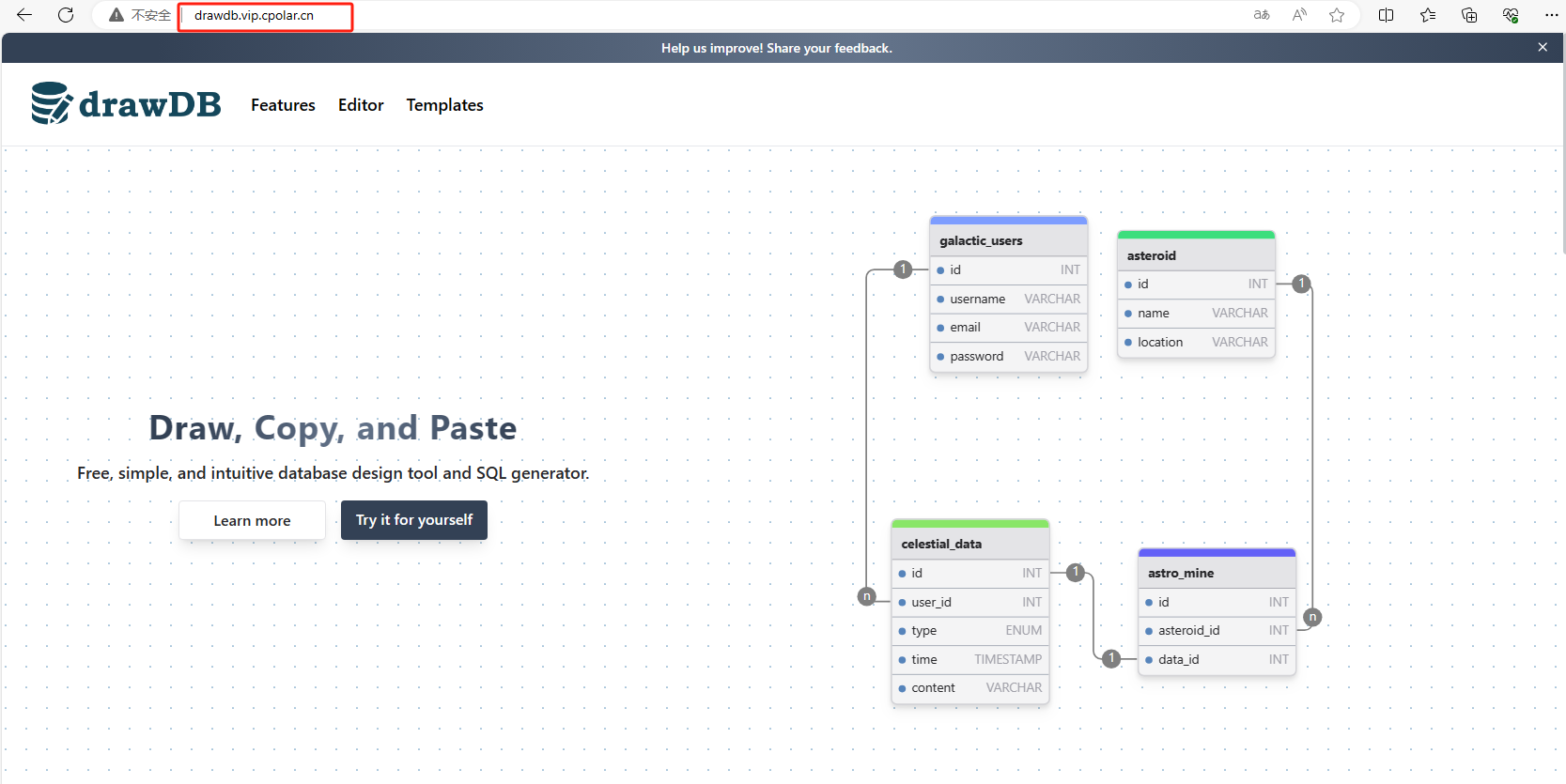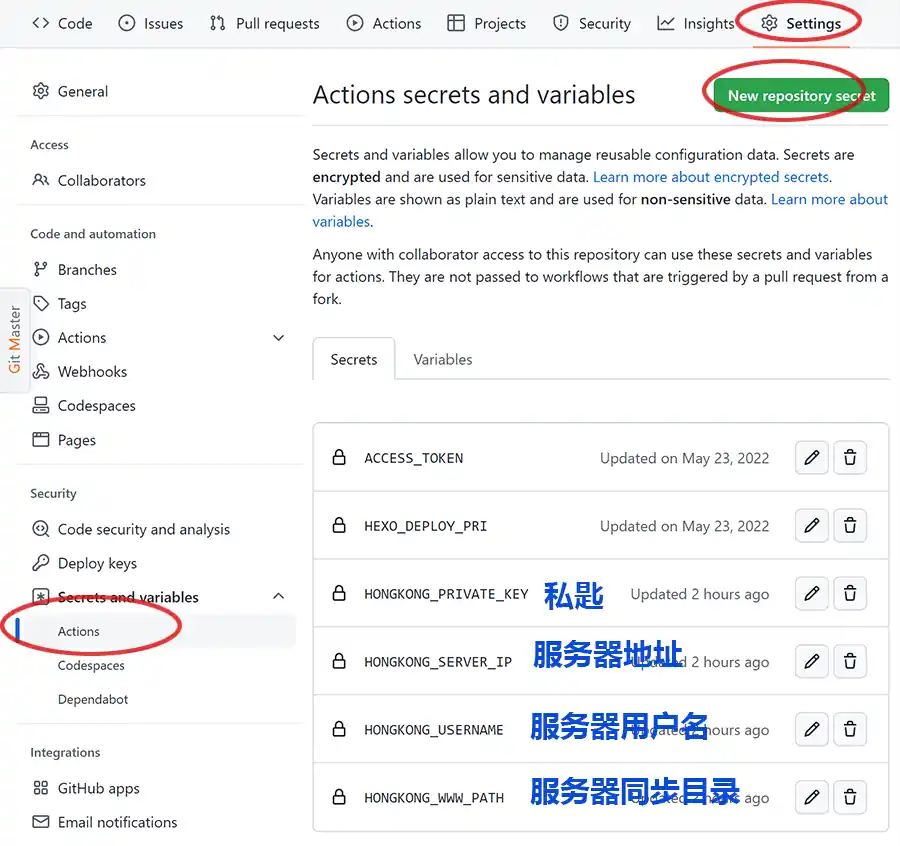一、关系型数据库和 NoSQL 数据库
1.1 数据库主要分为两大类:关系型数据库与 NoSQL 数据库
关系型数据库,是建立在关系模型基础上的数据库,其借助于集合代数等数学概念和方法来处理数据库中的数据主流的 MySQL、Oracle、MS SQL Server 和 DB2 都属于这类传统数据库。
NoSQL 数据库,全称为 Not Only SQL,意思就是适用关系型数据库的时候就使用关系型数据库,不适用的时候也没有必要非使用关系型数据库不可,可以考虑使用更加合适的数据存储。主要分为临时性键值存储(memcached、Redis)、永久性键值存储(ROMA、Redis)、面向文档的数据库(MongoDB、CouchDB)、面向列的数据库(Cassandra、HBase),每种 NoSQL 都有其特有的使用场景及优点。
1.2 为什么还要用 NoSQL 数据库
主要是由于随着互联网发展,数据量越来越大,对性能要求越来越高,传统数据库存在着先天性的缺陷,即单机(单库)性能瓶颈,并且扩展困难。这样既有单机单库瓶颈,却又扩展困难,自然无法满足日益增长的海量数据存储及其性能要求,所以才会出现了各种不同的 NoSQL 产品,NoSQL 根本性的优势在于在云计算时代,简单、易于大规模分布式扩展,并且读写性能非常高
1.3 RDBMS和NOSQL的特点及优缺点:
| 关系型数据库 | NoSQL 数据库 | |
| 特点 | -数据关系模型基于关系模型,结构化存储,完整性约束 -基于二维表及其之间的联系,需要连接、并、交、差、除等数据操作 -采用结构化的查询语言(SQL)做数据读写 -操作需要数据的一致性,需要事务甚至是强一致性 | -非结构化的存储 |
| 优点 | -保持数据的一致性(事务处理) -可以进行 join 等复杂查询 -通用化,技术成熟 | -高并发,大数据下读写能力较强 -基本支持分布式,易于扩展, -可伸缩简单,弱结构化存储 |
| 缺点 | -数据读写必须经过 sql 解析,大量数据、高并发下读写性能不足 -对数据做读写,或修改数据结构时需要加锁,影响并发操作 -无法适应非结构化存储 | -join 等复杂操作能力较弱 -事务支持较弱 -通用性差 -无完整约束复杂业务场景支持较差 |
二、Remote Dictionary Server 简介
中文官网 https://redis.cn
2.1 什么是redis
在2009年发布,开发者是意大利的萨尔瓦多·桑菲利波普(Salvatore Sanfilippo),他本想为自己的公司开发一个用于替换MySQL的产品Redis,但是没有想到他把Redis开源后大受欢迎,短短几年,Redis就有了很大的用户群体,目前国内外使用的公司众多,比如:阿里,百度,新浪微博,知乎网,GitHub,Twitter 等Redis是一个开源的、遵循BSD协议的、基于内存的而且目前比较流行的键值数据库(key-value database),是一个非关系型数据库,redis 提供将内存通过网络远程共享的一种服务,提供类似功能的还有memcached,但相比memcached,redis还提供了易扩展、高性能、具备数据持久性等功能。Redis 在高并发、低延迟环境要求比较高的环境使用量非常广泛
2.2 Redis特性
速度快: 10W QPS,基于内存,C语言实现
单线程
持久化
支持多种数据结构
支持多种编程语言
功能丰富: 支持Lua脚本,发布订阅,事务,pipeline等功能
简单: 代码短小精悍(单机核心代码只有23000行左右),单线程开发容易,不依赖外部库,使用简单
主从复制
支持高可用和分布式

单线程为何如此快?
纯内存
非阻塞
避免线程切换和竞态消耗
2.3 Redis应用场景
Session 共享:常见于web集群中的Tomcat或者PHP中多web服务器session共享
缓存:数据查询、电商网站商品信息、新闻内容
计数器:访问排行榜、商品浏览数等和次数相关的数值统计场景
微博/微信社交场合:共同好友,粉丝数,关注,点赞评论等
消息队列:ELK的日志缓存、部分业务的订阅发布系统
地理位置: 基于GEO(地理信息定位),实现摇一摇,附近的人,外卖等功能

2.4 缓存的实现流程
数据更新操作流程

数据读操作流程

三、Redis的安装
官方下载地址: http://download.redis.io/releases/
3.1 rpm包方式安装
[root@redis-node1 ~]# dnf install redis -y3.2 源码安装
[root@redis-node1 ~]# tar zxf redis-7.4.0.tar.gz
[root@redis-node1 ~]# ls
redis-7.4.0 redis-7.4.0.tar.gz
#安装编译工具
[root@redis-node1 redis-7.4.0]# dnf install make gcc initscripts-10.11.6-1.el9.x86_64 -y
#执行编译命令
[root@redis-node1 redis-7.4.0]# make
[root@redis-node1 redis-7.4.0]# make install
#启动Redis
[root@redis-node1 redis-7.4.0]# cd utils/
[root@redis-node1 utils]# ./install_server.sh
Welcome to the redis service installer
This script will help you easily set up a running redis server
This systems seems to use systemd. #提示系统使用的是systemd的初始化方式
Please take a look at the provided example service unit files in this directory,
and adapt and install them. Sorry!
[root@redis-node1 utils]# vim install_server.sh #解决报错问题
#bail if this system is managed by systemd
#_pid_1_exe="$(readlink -f /proc/1/exe)"
#if [ "${_pid_1_exe##*/}" = systemd ]
#then
# echo "This systems seems to use systemd."
# echo "Please take a look at the provided example service unit files in this directory, and adapt and install them. Sorry!"
# exit 1
#fi
[root@redis-node1 utils]# ./install_server.sh
Welcome to the redis service installer
This script will help you easily set up a running redis server
Please select the redis port for this instance: [6379] #端口号
Selecting default: 6379
Please select the redis config file name [/etc/redis/6379.conf] #配置文件
Selected default - /etc/redis/6379.conf
Please select the redis log file name [/var/log/redis_6379.log] #日志
Selected default - /var/log/redis_6379.log
Please select the data directory for this instance [/var/lib/redis/6379] #数据目录
Selected default - /var/lib/redis/6379
Please select the redis executable path [/usr/local/bin/redis-server] #命令路径
Selected config:
Port : 6379
Config file : /etc/redis/6379.conf
Log file : /var/log/redis_6379.log
Data dir : /var/lib/redis/6379
Executable : /usr/local/bin/redis-server
Cli Executable : /usr/local/bin/redis-cli
Is this ok? Then press ENTER to go on or Ctrl-C to abort.
Copied /tmp/6379.conf => /etc/init.d/redis_6379
Installing service...
Successfully added to chkconfig!
Successfully added to runlevels 345!
Starting Redis server...
Installation successful!#配置redis
[root@redis-node1 utils]# vim /etc/redis/6379.conf
bind * -::*
[root@redis-node1 utils]# /etc/init.d/redis_6379 restart
Stopping ...
Redis stopped
Starting Redis server...
#查看信息
[root@redis-node1 utils]# redis-cli
127.0.0.1:6379> info四、Redis的基本操作
| config get * | 查看配置 |
| select 1 | 选择数据库 |
| flushdb | 清空当前数据库 |
| flushall | 清空所有数据库 |
| move key 1 | 移动 key |
| del key | 删除 |
| rename oldkey newkey | 改名 |
| expire key 10 | 设置过期时间 |
| persist key | 设置持久化 |
| keys user* | 查询 |
| exists key | 判断是否存在 |
五、Redis 主从复制
5.1 环境配置
redis-node1 master
redis-node2 slave
redis-node3 slave
注意:在配置多台redis时建议用复制的方式节省编译时间
5.2 配置主从同步
1.修改mastser节点的配置文件
[root@redis-node1 & node2 & node3 ~]# vim /etc/redis/6379.conf
protected-mode no #关闭protected模式
[root@redis-node1 &node2 & node3 ~]# /etc/init.d/redis_6379 restart
Stopping ...
Redis stopped
Starting Redis server...2.配置slave节点
[root@redis-node2 & 3 ~]# vim /etc/redis/6379.conf
replicaof 172.25.254.100 6379
[root@redis-node2 & 3 ~]# /etc/init.d/redis_6379 restart
Stopping ...
Waiting for Redis to shutdown ...
Redis stopped
Starting Redis server...3.测试效果
#在mastser节点
[root@redis-node1 ~]# redis-cli
127.0.0.1:6379> set name yu
OK
#在slave节点查看
[root@redis-node2 ~]# redis-cli
127.0.0.1:6379> get name
"yu"5.3 主从同步过程

slave节点发送同步亲求到master节点
slave节点通过master节点的认证开始进行同步
master节点会开启bgsave进程发送内存rbd到slave节点,在此过程中是异步操作,也就是说master节点仍然可以进行写入动作
slave节点收到rdb后首先清空自己的所有数据
slave节点加载rdb并进行数据恢复
在master和slave同步过程中master还会开启新的bgsave进程把没有同步的数据进行缓存
然后通过自有的replactionfeedslave函数把未通过内存快照发动到slave的数据一条一条写入到slave中
六、Redis的哨兵(高可用)
6.1 Redis哨兵

Sentinel 进程是用于监控redis集群中Master主服务器工作的状态,在Master主服务器发生故障的时候,可以实现Master和Slave服务器的切换,保证系统的高可用,此功能在redis2.6+的版本已引用,Redis的哨兵模式到了2.8版本之后就稳定了下来。一般在生产环境也建议使用Redis的2.8版本的以后版本
每个哨兵(Sentinel)进程会向其它哨兵(Sentinel)、Master、Slave定时发送消息,以确认对方是否”活”着,如果发现对方在指定配置时间(此项可配置)内未得到回应,则暂时认为对方已离线,也就是所谓的”主观认为宕机” (主观:是每个成员都具有的独自的而且可能相同也可能不同的意识),英文名称:Subjective Down,简称SDOWN
有主观宕机,对应的有客观宕机。当“哨兵群”中的多数Sentinel进程在对Master主服务器做出SDOWN 的判断,并且通过 SENTINEL is-master-down-by-addr 命令互相交流之后,得出的Master Server下线判断,这种方式就是“客观宕机”(客观:是不依赖于某种意识而已经实际存在的一切事物),英文名称是:Objectively Down, 简称 ODOWN
通过一定的vote算法,从剩下的slave从服务器节点中,选一台提升为Master服务器节点,然后自动修改相关配置,并开启故障转移(failover)
Sentinel 机制可以解决master和slave角色的自动切换问题,但单个 Master 的性能瓶颈问题无法解决,类似于MySQL中的MHA功能
Redis Sentinel中的Sentinel节点个数应该为大于等于3且最好为奇数
sentinel中的三个定时任务
每10秒每个sentinel对master和slave执行info
发现slave节点
确认主从关系
每2秒每个sentinel通过master节点的channel交换信息(pub/sub)
通过sentinel__:hello频道交互
交互对节点的“看法”和自身信息
每1秒每个sentinel对其他sentinel和redis执行pi
6.2 哨兵的实验过程
在所有阶段中关闭 protected-mode no
1.在master节点中
#编辑配置文件
[root@redis-node1 ~]# cd redis-7.4.0/
[root@redis-node1 redis-7.4.0]# cp sentinel.conf /etc/redis/
[root@redis-node1 redis-7.4.0]# vim /etc/redis/sentinel.conf
protected-mode no #关闭保护模式
port 26379 #监听端口
daemonize no #进入不打如后台
pidfile /var/run/redis-sentinel.pid #sentinel进程pid文件
loglevel notice #日志级别
sentinel monitor mymaster 172.25.254.100 6379 2 #创建sentinel监控监控master主机,2表示必须得到2票
sentinel down-after-milliseconds mymaster 10000 #master中断时长,10秒连不上视为master下线
sentinel parallel-syncs mymaster 1 #发生故障转移后,同时开始同步新master数据的slave数量
sentinel failover-timeout mymaster 180000 #整个故障切换的超时时间为3分钟
####复制配置文件到其他阶段
[root@redis-node1 redis-7.4.0]# scp /etc/redis/sentinel.conf
root@172.25.254.201:/etc/redis/
root@172.25.254.201's password:
sentinel.conf
100% 14KB 9.7MB/s 00:00
[root@redis-node1 redis-7.4.0]# scp /etc/redis/sentinel.conf
root@172.25.254.200:/etc/redis/
root@172.25.254.200's password:
sentinel.conf2 启动服务
[root@redis-node1 redis-7.4.0]# redis-sentinel /etc/redis/sentinel.conf6.3 在整个架构中可能会出现的问题
问题:
在生产环境中如果master和slave中的网络出现故障,由于哨兵的存在会把master提出去
当网络恢复后,master发现环境发生改变,master就会把自己的身份转换成slave
master变成slave后会把网络故障那段时间写入自己中的数据清掉,这样数据就丢失了。
解决:
master在被写入数据时会持续连接slave,mater确保有2个slave可以写入我才允许写入
如果slave数量少于2个便拒绝写入
#在matster中设定
[root@redis-node2 ~]# redis-cli
127.0.0.1:6379> CONFIG GET min-slaves-to-write
1) "min-slaves-to-write"
2) "0"
127.0.0.1:6379> CONFIG set min-slaves-to-write 2
OK
127.0.0.1:6379> CONFIG GET min-slaves-to-write
1) "min-slaves-to-write"
2) "2"
#如果要永久保存写到配置文件中/etc/redis/6379.conf七、Redis Cluster(无中心化设计)
7.1 Redis Cluster 工作原理
在哨兵sentinel机制中,可以解决redis高可用问题,即当master故障后可以自动将slave提升为master,从而可以保证redis服务的正常使用,但是无法解决redis单机写入的瓶颈问题,即单机redis写入性能受限于单机的内存大小、并发数量、网卡速率等因素。
redis 3.0版本之后推出了无中心架构的redis cluster机制,在无中心的redis集群当中,其每个节点保存当前节点数据和整个集群状态,每个节点都和其他所有节点连接
Redis Cluster特点如下
1. 所有Redis节点使用(PING机制)互联
2. 集群中某个节点的是否失效,是由整个集群中超过半数的节点监测都失效,才能算真正的失效
3. 客户端不需要proxy即可直接连接redis,应用程序中需要配置有全部的redis服务器IP
4. redis cluster把所有的redis node 平均映射到 0-16383个槽位(slot)上,读写需要到指定的redis node上进行操作,因此有多少个redis node相当于redis 并发扩展了多少倍,每个redis node 承担16384/N个槽位
5. Redis cluster预先分配16384个(slot)槽位,当需要在redis集群中写入一个key -value的时候,会使用CRC16(key) mod 16384之后的值,决定将key写入值哪一个槽位从而决定写入哪一个Redis节点上,从而有效解决单机瓶颈。
Redis cluster 架构

假如三个主节点分别是:A, B, C 三个节点,采用哈希槽 (hash slot)的方式来分配16384个slot 的话它们三个节点分别承担的slot 区间可以是:
节点 A 覆盖 0 - 5460节点 B 覆盖 5461 - 10922节点 C 覆盖 10923 - 16383

Redis cluster 主从架构
Redis cluster的架构虽然解决了并发的问题,但是又引入了一个新的问题,每个Redis master的高可用如何解决?
那就是对每个master 节点都实现主从复制,从而实现 redis 高可用性

Redis Cluster 部署架构说明

7.2 创建redis cluster的前提
1.每个redis node节点采用相同的硬件配置、相同的密码、相同的redis版本。
2.每个节点必须开启的参数
cluster-enabled yes #必须开启集群状态,开启后redis进程会有cluster显示
cluster-config-file nodes-6380.conf #此文件有redis cluster集群自动创建和维护,不需要任何 手动操作
3.所有redis服务器必须没有任何数据
4.先启动为单机redis且没有任何key value
7.3 部署redis cluster
在所有redis主机中
[root@redis-masterx ~]# vim /etc/redis/redis.conf
masterauth "123456" #集群主从认证
requirepass "123456" #redis登陆密码 redis-cli 命令连接redis后要
用“auth 密码”进行认证
cluster-enabled yes #开启cluster集群功能
cluster-config-file nodes-6379.conf #指定集群配置文件
cluster-node-timeout 15000 #节点加入集群的超时时间单位是ms
[root@redis-master1 ~]# systemctl restart redis.service
[root@redis-master1 ~]# redis-cli
127.0.0.1:6379> auth 123456
OK
127.0.0.1:6379> info
# Cluster
cluster_enabled:17.4 redis-cli --cluster 参数说明
[root@redis-master1 ~]# redis-cli --cluster help
Cluster Manager Commands:
create host1:port1 ... hostN:portN #创建集群
--cluster-replicas <arg> #指定master的副本数
check <host:port> or <host> <port> #检测集群信息
info <host:port> or <host> <port> #查看集群信息
fix <host:port> or <host> <port> #修复集群
reshard <host:port> or <host> <port> #在线热迁移集群指定主机的slots数据
rebalance <host:port> or <host> <port> #平衡各集群主机的slot数量
add-node new_host:new_port existing_host:existing_port #添加主机
del-node host:port node_id #删除主机
import host:port #导入外部redis服务器的数据到当前集群
-7.5 创建redis-cluster
[root@redis-master1 ~]# redis-cli --cluster create -a 123456 \
> 172.25.254.10:6379 172.25.254.20:6379 172.25.254.30:6379 \
> 172.25.254.110:6379 172.25.254.120:6379 172.25.254.130:6379 \
> --cluster-replicas 1
>>> Performing hash slots allocation on 6 nodes...
Master[0] -> Slots 0 - 5460 #哈希槽分配
Master[1] -> Slots 5461 - 10922
Master[2] -> Slots 10923 - 16383
Adding replica 172.25.254.120:6379 to 172.25.254.10:6379 #主从分配情况
Adding replica 172.25.254.130:6379 to 172.25.254.20:6379
Adding replica 172.25.254.110:6379 to 172.25.254.30:6379
#配置文件位置
[root@redis-master1 ~]# ll /var/lib/redis/nodes-6379.conf检测redis集群状态
[root@redis-master1 ~]# redis-cli -a 123456 --cluster info 172.25.254.10:6379 #查看集群状态
Warning: Using a password with '-a' or '-u' option on the command line interface
may not be safe.
172.25.254.10:6379 (5ab2e93f...) -> 0 keys | 5461 slots | 1 slaves.
172.25.254.20:6379 (ba504e78...) -> 0 keys | 5462 slots | 1 slaves.
172.25.254.30:6379 (1fcaeb1d...) -> 0 keys | 5461 slots | 1 slaves.
[OK] 0 keys in 3 masters.
0.00 keys per slot on average.
[root@redis-master1 ~]# redis-cli -a 123456 cluster info
Warning: Using a password with '-a' or '-u' option on the command line interface
may not be safe.
cluster_state:ok
cluster_slots_assigned:16384
cluster_slots_ok:16384
cluster_slots_pfail:0
cluster_slots_fail:0
cluster_known_nodes:6
cluster_size:3
cluster_current_epoch:6
cluster_my_epoch:1
cluster_stats_messages_ping_sent:821
cluster_stats_messages_pong_sent:801
cluster_stats_messages_sent:1622
cluster_stats_messages_ping_received:796
cluster_stats_messages_pong_received:821
cluster_stats_messages_meet_received:5
cluster_stats_messages_received:1622
[root@redis-master1 ~]# redis-cli -a 123456 --cluster check 172.25.254.10:6379 #检测集群
Warning: Using a password with '-a' or '-u' option on the command line interface
may not be safe.
172.25.254.10:6379 (5ab2e93f...) -> 0 keys | 5461 slots | 1 slaves.
172.25.254.20:6379 (ba504e78...) -> 0 keys | 5462 slots | 1 slaves.
172.25.254.30:6379 (1fcaeb1d...) -> 0 keys | 5461 slots | 1 slaves.
[OK] 0 keys in 3 masters.
0.00 keys per slot on average.写入数据
[root@redis-master1 ~]# redis-cli -a 123456
Warning: Using a password with '-a' or '-u' option on the command line interface may not be safe.
127.0.0.1:6379> set key1 value1 #被分配到20的hash槽位上
(error) MOVED 9189 172.25.254.20:6379
[root@redis-master2 ~]# redis-cli -a 123456
Warning: Using a password with '-a' or '-u' option on the command line interface may not be safe.
127.0.0.1:6379> set key1 value1
OK7.6 集群扩容
#添加master
[root@redis-master1 ~]# redis-cli -a 123456 --cluster add-node 172.25.254.40:6379 172.25.254.10:6379
Warning: Using a password with '-a' or '-u' option on the command line interface
may not be safe.
>>> Adding node 172.25.254.40:6379 to cluster 172.25.254.10:6379
>>> Performing Cluster Check (using node 172.25.254.10:6379)
M: 5ab2e93f4f0783983676f7bd118efaacfb202bd1 172.25.254.10:6379
slots:[0-5460] (5461 slots) master
1 additional replica(s)
S: c20c9b5465b2e64868161c0e285d55bc81358ba4 172.25.254.110:6379
slots: (0 slots) slave
replicates 1fcaeb1dd936b46f4ea1efe4330c54195e66acf7
M: ba504e78f14df5944280f9035543277a0cf5976b 172.25.254.20:6379
slots:[5461-10922] (5462 slots) master
1 additional replica(s)
S: 83d7a82fe896cf9f4d8212cb533058659bba16ce 172.25.254.130:6379
slots: (0 slots) slave
replicates ba504e78f14df5944280f9035543277a0cf5976b
M: 1fcaeb1dd936b46f4ea1efe4330c54195e66acf7 172.25.254.30:6379
slots:[10923-16383] (5461 slots) master
1 additional replica(s)
S: d458f34fa900d83212c021dc1e65396e490b5495 172.25.254.120:6379
slots: (0 slots) slave
replicates 5ab2e93f4f0783983676f7bd118efaacfb202bd1
[OK] All nodes agree about slots configuration.
>>> Check for open slots...
>>> Check slots coverage...
[OK] All 16384 slots covered
>>> Getting functions from cluster
>>> Failed retrieving Functions from the cluster, skip this step as Redis version
>>> Send CLUSTER MEET to node 172.25.254.40:6379 to make it join the cluster.
[OK] New node added correctly.
[root@redis-master1 ~]# redis-cli -a 123456 --cluster info 172.25.254.10:6379
Warning: Using a password with '-a' or '-u' option on the command line interface
may not be safe.
172.25.254.10:6379 (5ab2e93f...) -> 0 keys | 5461 slots | 1 slaves.
172.25.254.40:6379 (009571cb...) -> 0 keys | 0 slots | 0 slaves.
172.25.254.20:6379 (ba504e78...) -> 1 keys | 5462 slots | 1 slaves.
172.25.254.30:6379 (1fcaeb1d...) -> 0 keys | 5461 slots | 1 slaves.
[OK] 1 keys in 4 masters.
0.00 keys per slot on average.
#分配槽位
[root@redis-master1 ~]# redis-cli -a 123456 --cluster reshard
172.25.254.10:6379
Warning: Using a password with '-a' or '-u' option on the command line interface may not be safe.
>>> Performing Cluster Check (using node 172.25.254.10:6379)
M: 5ab2e93f4f0783983676f7bd118efaacfb202bd1 172.25.254.10:6379
slots:[0-5460] (5461 slots) master
1 additional replica(s)
S: c20c9b5465b2e64868161c0e285d55bc81358ba4 172.25.254.110:6379
slots: (0 slots) slave
replicates 1fcaeb1dd936b46f4ea1efe4330c54195e66acf7
M: 009571cb206a89afa6658b60b2d403136056ac09 172.25.254.40:6379
slots: (0 slots) master
M: ba504e78f14df5944280f9035543277a0cf5976b 172.25.254.20:6379
slots:[5461-10922] (5462 slots) master
1 additional replica(s)
S: 83d7a82fe896cf9f4d8212cb533058659bba16ce 172.25.254.130:6379
slots: (0 slots) slave
replicates ba504e78f14df5944280f9035543277a0cf5976b
M: 1fcaeb1dd936b46f4ea1efe4330c54195e66acf7 172.25.254.30:6379
slots:[10923-16383] (5461 slots) master
1 additional replica(s)
S: d458f34fa900d83212c021dc1e65396e490b5495 172.25.254.120:6379
slots: (0 slots) slave
replicates 5ab2e93f4f0783983676f7bd118efaacfb202bd1
[OK] All nodes agree about slots configuration.
>>> Check for open slots...
>>> Check slots coverage...
[OK] All 16384 slots covered.
How many slots do you want to move (from 1 to 16384)? 4096
What is the receiving node ID? 009571cb206a89afa6658b60b2d403136056ac09
Please enter all the source node IDs.
Type 'all' to use all the nodes as source nodes for the hash slots.
Type 'done' once you entered all the source nodes IDs.
Source node #1: all
#添加salve
[root@redis-master1 ~]# redis-cli -a 123456 --cluster add-node 172.25.254.140:6379 172.25.254.10:6379 --cluster-slave --cluster-master-id 009571cb206a89afa6658b60b2d403136056ac09
Warning: Using a password with '-a' or '-u' option on the command line interface may not be safe.
>>> Adding node 172.25.254.140:6379 to cluster 172.25.254.10:6379
>>> Performing Cluster Check (using node 172.25.254.10:6379)
M: 5ab2e93f4f0783983676f7bd118efaacfb202bd1 172.25.254.10:6379
slots:[1365-5460] (4096 slots) master
1 additional replica(s)
S: c20c9b5465b2e64868161c0e285d55bc81358ba4 172.25.254.110:6379
slots: (0 slots) slave
replicates 1fcaeb1dd936b46f4ea1efe4330c54195e66acf7
M: 009571cb206a89afa6658b60b2d403136056ac09 172.25.254.40:6379
slots:[0-1364],[5461-6826],[10923-12287] (4096 slots) master
M: ba504e78f14df5944280f9035543277a0cf5976b 172.25.254.20:6379
slots:[6827-10922] (4096 slots) master
1 additional replica(s)
S: 83d7a82fe896cf9f4d8212cb533058659bba16ce 172.25.254.130:6379
slots: (0 slots) slave
replicates ba504e78f14df5944280f9035543277a0cf5976b
M: 1fcaeb1dd936b46f4ea1efe4330c54195e66acf7 172.25.254.30:6379
slots:[12288-16383] (4096 slots) master
1 additional replica(s)
S: d458f34fa900d83212c021dc1e65396e490b5495 172.25.254.120:6379
slots: (0 slots) slave
replicates 5ab2e93f4f0783983676f7bd118efaacfb202bd1
[OK] All nodes agree about slots configuration.
>>> Check for open slots...
>>> Check slots coverage...
[OK] All 16384 slots covered.
>>> Send CLUSTER MEET to node 172.25.254.140:6379 to make it join the cluster.
Waiting for the cluster to join
>>> Configure node as replica of 172.25.254.40:6379.
[OK] New node added correctly.7.7 clsuter集群维护
添加节点的时候是先添加node节点到集群,然后分配槽位,删除节点的操作与添加节点的操作正好相反,是先将被删除的Redis node上的槽位迁移到集群中的其他Redis node节点上,然后再将其删除,如果一个Redis node节点上的槽位没有被完全迁移,删除该node的时候会提示有数据且无法删除。
#移除要下线主机的哈希槽位
[root@redis-master2 ~]# redis-cli -a 123456 --cluster reshard 172.25.254.20:6379
Warning: Using a password with '-a' or '-u' option on the command line interface may not be safe.
>>> Performing Cluster Check (using node 172.25.254.20:6379)
M: ba504e78f14df5944280f9035543277a0cf5976b 172.25.254.20:6379
slots:[6827-10922] (4096 slots) master
1 additional replica(s)
M: 1fcaeb1dd936b46f4ea1efe4330c54195e66acf7 172.25.254.30:6379
slots:[12288-16383] (4096 slots) master
1 additional replica(s)
M: 009571cb206a89afa6658b60b2d403136056ac09 172.25.254.40:6379
slots:[0-1364],[5461-6826],[10923-12287] (4096 slots) master
1 additional replica(s)
S: c20c9b5465b2e64868161c0e285d55bc81358ba4 172.25.254.110:6379
slots: (0 slots) slave
replicates 1fcaeb1dd936b46f4ea1efe4330c54195e66acf7
S: d458f34fa900d83212c021dc1e65396e490b5495 172.25.254.120:6379
slots: (0 slots) slave
replicates 5ab2e93f4f0783983676f7bd118efaacfb202bd1
M: 5ab2e93f4f0783983676f7bd118efaacfb202bd1 172.25.254.10:6379
slots:[1365-5460] (4096 slots) master
1 additional replica(s)
S: 83d7a82fe896cf9f4d8212cb533058659bba16ce 172.25.254.130:6379
slots: (0 slots) slave
replicates ba504e78f14df5944280f9035543277a0cf5976b
S: 86a4a8fb08e70e41b5a30f829deb983d23854ea7 172.25.254.140:6379
slots: (0 slots) slave
replicates 009571cb206a89afa6658b60b2d403136056ac09
[OK] All nodes agree about slots configuration.
>>> Check for open slots...
>>> Check slots coverage...
[OK] All 16384 slots covered.
How many slots do you want to move (from 1 to 16384)? 4096
What is the receiving node ID? 1fcaeb1dd936b46f4ea1efe4330c54195e66acf7
Please enter all the source node IDs.
Type 'all' to use all the nodes as source nodes for the hash slots.
Type 'done' once you entered all the source nodes IDs.
Source node #1: 5ab2e93f4f0783983676f7bd118efaacfb202bd1
Source node #2: done
#删除master
[root@redis-master2 ~]# redis-cli -a 123456 --cluster del-node 172.25.254.120:6379 d458f34fa900d83212c021dc1e65396e490b5495
Warning: Using a password with '-a' or '-u' option on the command line interface may not be safe.
>>> Removing node d458f34fa900d83212c021dc1e65396e490b5495 from cluster
172.25.254.120:6379
>>> Sending CLUSTER FORGET messages to the cluster...
>>> Sending CLUSTER RESET SOFT to the deleted node.
[root@redis-master2 ~]# redis-cli -a 123456 --cluster del-node 172.25.254.10:6379 5ab2e93f4f0783983676f7bd118efaacfb202bd1
Warning: Using a password with '-a' or '-u' option on the command line interface may not be safe.
>>> Removing node 5ab2e93f4f0783983676f7bd118efaacfb202bd1 from cluster
172.25.254.10:6379
>>> Sending CLUSTER FORGET messages to the cluster...
>>> Sending CLUSTER RESET SOFT to the deleted node.

















